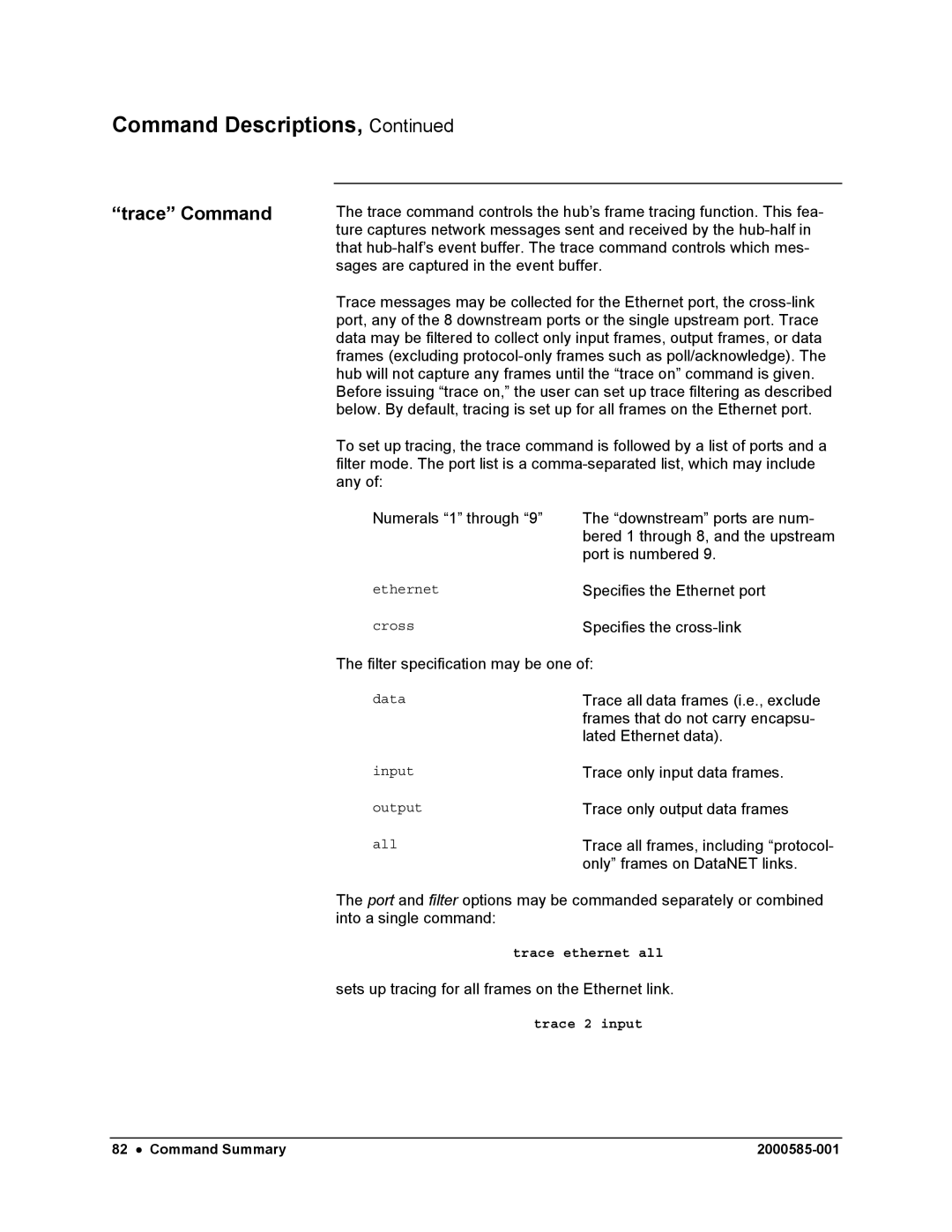Command Descriptions, Continued
“trace” Command
The trace command controls the hub’s frame tracing function. This fea- ture captures network messages sent and received by the
Trace messages may be collected for the Ethernet port, the
Before issuing “trace on,” the user can set up trace filtering as described below. By default, tracing is set up for all frames on the Ethernet port.
To set up tracing, the trace command is followed by a list of ports and a filter mode. The port list is a
Numerals “1” through “9” | The “downstream” ports are num- |
| bered 1 through 8, and the upstream |
| port is numbered 9. |
ethernet | Specifies the Ethernet port |
cross | Specifies the |
The filter specification may be one of: | |
data | Trace all data frames (i.e., exclude |
| frames that do not carry encapsu- |
| lated Ethernet data). |
input | Trace only input data frames. |
output | Trace only output data frames |
all | Trace all frames, including “protocol- |
| only” frames on DataNET links. |
The port and filter options may be commanded separately or combined into a single command:
trace ethernet all
sets up tracing for all frames on the Ethernet link.
trace 2 input
82 • Command Summary |
